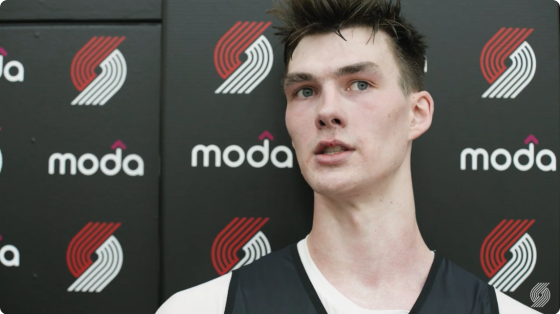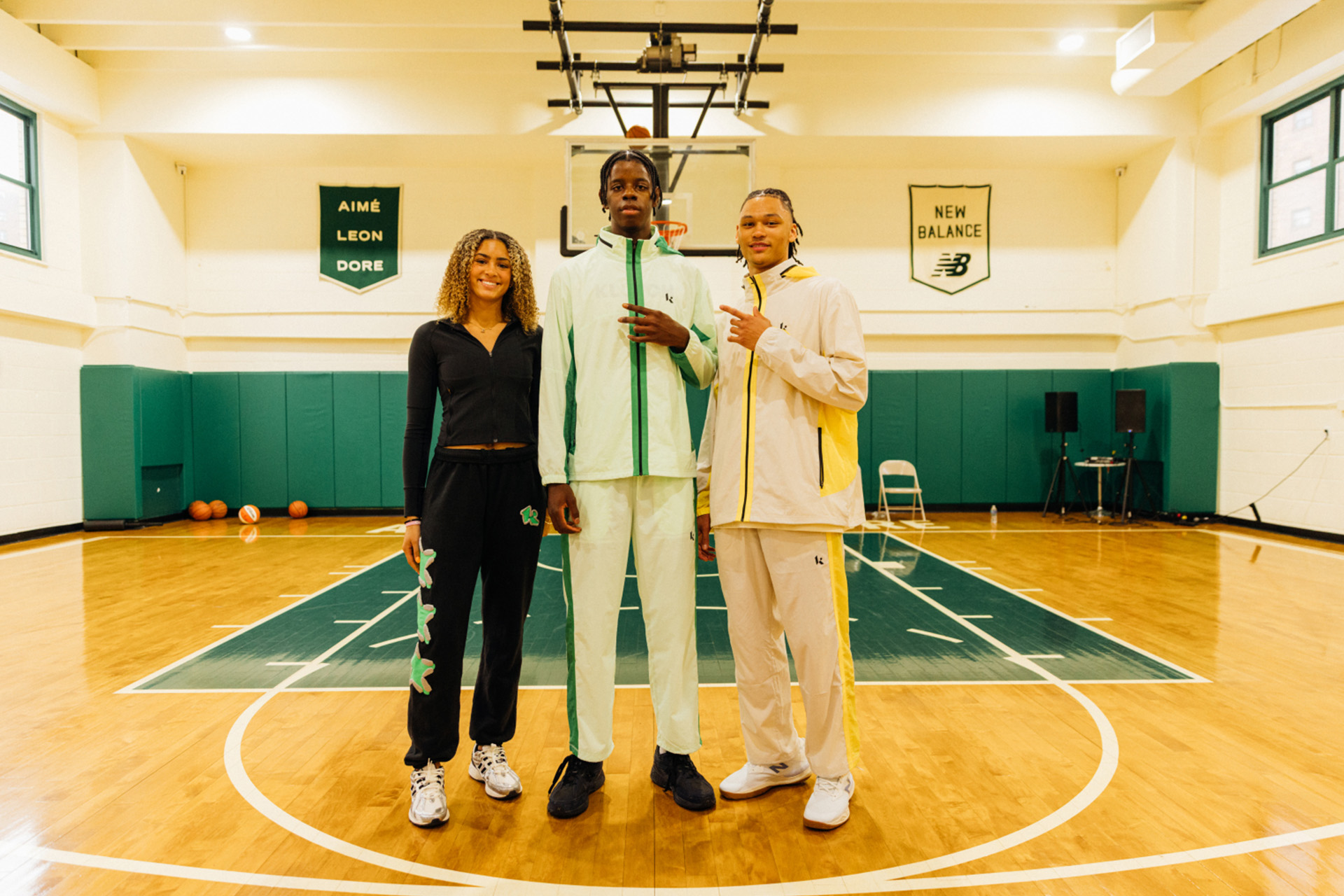Dalano Banton will likely not play much for the 2023-2024 Celtics.
But this third-year player has an intriguing skillset that fits with Boston’s roster needs, and if things break right, he could be a rotation player. There’s a chance, a slim chance, that Brad Stevens found a diamond in the rough, a guy who can immediately help this year’s team and has room for growth.
Over two seasons in Toronto, Banton couldn’t consistently crack the rotation. He had a 20-game stretch early in his rookie season where he averaged 14 minutes, but ever since, he’s been relegated to garbage time, mop-up duty, and “the opponent has decided to rest all five starters for tonight’s game” action.
His total minutes decreased from 696 as a rookie to 279 in 2022-2023. There were only two times last year when he played over 20 minutes, and I decided to rewatch these games to identify his strengths, weaknesses, why Nick Nurse lost trust in him, and what he could potentially bring to the Celtics.
If you’re looking for an oversimplified descriptor of Banton’s game, he’s the anti-Payton Pritchard. Banton is a 6’7” with a 6’10” wingspan. What he has in height, he doesn’t compensate in quickness. Although he’s not a leaper and doesn’t have an explosive first step, he has fluid lateral movement and exceptional open floor speed.
With that size, he brings a lot to the table: off-balance floaters, well-timed cuts, court vision, switchability, and a high motor. His primary weakness is his outside jumper (27.5% 3FG on 102 career attempts, 23% in college), and he lacks any semblance of one-on-one scoring. Conversely, Pritchard doesn’t have the physique or athleticism, but he’s a knockdown shooter with a deep offensive bag. As of late September, third-string point guard spot is Pritchard’s to lose.
On November 14th against the Detroit Pistons — with Fred VanVleet, Paskal Siakam, and Gary Trent jr. all sidelined — Banton got the start and had a career night.
Here are all of his jumpers from that game:
Excluding a second quarter heave, Banton shot 3-of-6 from deep. He short-armed the last corner three, but otherwise, you wouldn’t know he had a non-shooter reputation. He has a compact release that stays consistent with each attempt. He also didn’t hesitate to let it fly when open. When a supposed non-shooter shoots with confidence (e.g. early-career Avery Bradley) there’s usually a better chance for improvement than a reluctant shooter (e.g. Rajon Rondo).
Banton finished with 27 points on 9-of-16 field goals, leading Toronto to a four-point win. He also shined defensively. Watch as he uses his length to generate deflections:
He moves like a smaller player but still takes advantage of his elite wingspan. Additionally, he was no pushover when the bigs tried to overpower him in the post:
And on his best defensive play of the night, he hounds Killian Hayes bringing up the ball then blocks him at the rim:
It should be noted that Banton had a 4.5 block percentage last year. Sure, he didn’t even play 300 minutes, but 4.5 is ridiculous for a guard. Matisse Thybulle in 2020-2021 had a historic shot blocking season as a guard, and his percentage was 4.9. Dwyane Wade, often called the best shot blocking guard ever, only cracked 3.0 once. Banton’s new teammate, Derrick White, led all guards with a 2.8 percentage last year.
In his final college season at Nebraska, Banton finished 15th in the Big Ten in blocked shots and posted a 4.0 block percentage. This is clearly an area of strength that Brad Stevens identified, as he’s prioritized defensive-minded guards since taking over as GM. With Banton and White, the Celtics have two lengthy guards who can fight around screens and contest three pointers while also offering rim protection against smaller players.
While Banton had a career game at Detroit, he still made some mistakes:
On the first play, he provides unnecessary help and gets called for a phantom foul. Banton occasionally showed jumpiness in his defensive rotations, likely a product of pent-up energy from extended stints on the bench (a concept known formally as “Big DNP Energy”). On the second play, he takes a wild one-legged jumper, and the third, he jumps before knowing where to pass, leading to a Toronto turnover.
But more often than not, Banton would make the right plays. Earlier in the game, his teammates sometimes ignored him, but as it progressed, he earned their trust and had more opportunities to initiate offense. Here, with the game in the balance, he made this simple play for an uncontested dunk:
As the defenders cheat towards the screener side, Banton rejects the screen then drives and dishes to Scottie Barnes in the dunker spot. Making these fundamental reads are a necessity for point guards who get consistent NBA minutes.
Unfortunately for Dalano, that consistent playing time never came. The only meaningful minutes he received for the rest of the season came the next game, November 16th against Miami. And that night… ehh… didn’t go so well.
Before getting into his offense, let’s watch a few clips of Jimmy Butler not taking him seriously as a defender:
On the first play, Banton shows minimal effort at the point of attack, gets spun around, and offers no resistance on the ensuing Nikola Jovic layup. On the second play, Butler hunts him in the pick-and-roll then easily drives to the rim and draws the foul.
It’s one thing to get overpowered by an apex predator wing like Butler; it’s another to have mental lapses on defense:
On the first play, it looks like he doesn’t know the pick-and-roll coverage. Then, for whatever reason, he considers leaving Dewayne Dedmon on the block to chase Gabe Vincent running to the perimeter, and this poor positioning gives Max Strus space to drive and finish without any help defense. On the second play, following a timeout, Nick Nurse is imploring him to cover Duncan Robinson, who’s alone under the basket. Robinson receives the pass, the defense helps, and Strus gets a cutting dunk. Banton can’t make these mental mistakes on the championship contending Celtics.
As the 46th overall pick in 2021, Banton wasn’t a highly scrutinized prospect, but scouts did wonder whether he could handle the physicality of the NBA. On this play late in the first half, he gets punked by Kyle Lowry as he tries to receive a dribble hand-off:
It’s probably a foul on Lowry, but Banton doesn’t put up much of a fight. He’s not the first guy, and won’t be the last, to get out-muscled Lowry and Butler. It takes a few years for young players to add strength, and guys who haven’t played much need time to grasp the rhythms of their team’s defensive schemes.
Ultimately, Banton’s jump shot will dictate his NBA future. Here, at the start of the second half, he takes three early three-pointers:
He gets more and more wide open but can’t make a shot. For all the good things he’s capable of doing, if Banton can’t hit open threes, he won’t play. Tatum and Brown will always draw help defenders and perimeter guys must be ready to shoot when open. This is the main obstacle between him and regular NBA minutes.
After this triad of misses, Nick Nurse subbed him out with seven minutes left in the third quarter, and he didn’t see the floor the rest of the game. The Raptors trailed by double digits, but after Juancho Hernangomez took most of Banton’s second half minutes, they came back and won the game behind O.G. Anunoby’s 18 second half points. Banton finished the game with 5 points on 2-of-10 shooting in 20 minutes while posting a -14, by far the worst on the team.
Despite this uninspired performance against Miami, watching these two mid-November games leaves me feeling more optimistic about Banton’s chances to impact the Celtics. He’s clearly an NBA-level talent, but hasn’t gotten consistent opportunity.
The competitiveness, feel for the game, and versatility are all there. The shooting form is solid and I don’t see why it can’t improve. Derrick White was a 31 percent three-point shooter in 49 combined regular season and playoff games during his first year with Boston. Then in last year’s playoffs, White shot 45 percent on 5.5 attempts per game. If Banton puts in the work, I can see him shooting in the 35 to 37 percent range.
When Stevens traded Smart, the Celtics lost their best passer, a guy who wasn’t afraid of making a high degree of difficulty pass to generate an easy bucket. Banton made some ambitious passes during this two-game stretch, trying things that nobody on the current roster would:
The first is a slightly mistimed alley-oop that ultimately resulted in a score, and the second is a wrap-around pass on a hammer play that would have worked if Otto Porter jr. got to the corner on time. I was impressed by his confidence making these passes, despite the awkwardness of the first and turnover on the second.
The third clip was one of his career highlights. He runs the floor immediately after the Raptors secure the rebound, catches the ball in stride, and finds Chris Boucher for the lob. The Celtics could certainly use this brand of transition speed and daredevil passing. I had to ease my excitement while watching Banton initiate one-man fast breaks:
Based on these two outstanding transition finishes, you wonder why he essentially got benched for the rest of the season. For the 2023-2024 Celtics, it seems like the top eight rotation spots are set, but I’m interested in seeing who gets the most minutes between Banton, Oshae Brissett, Sam Hauser, Luke Kornet, and Jordan Walsh. Entering training camp, most Celtics fans would say Banton is the least likely to win this ninth man spot. But after some amateur film study, this writer thinks he’s a dark horse candidate to sneak into the regular rotation.






